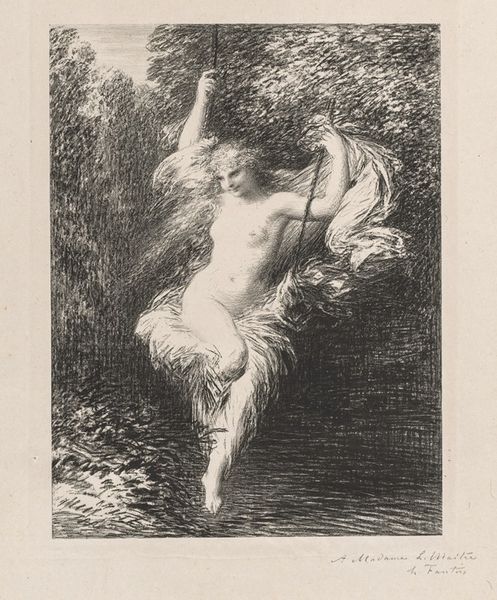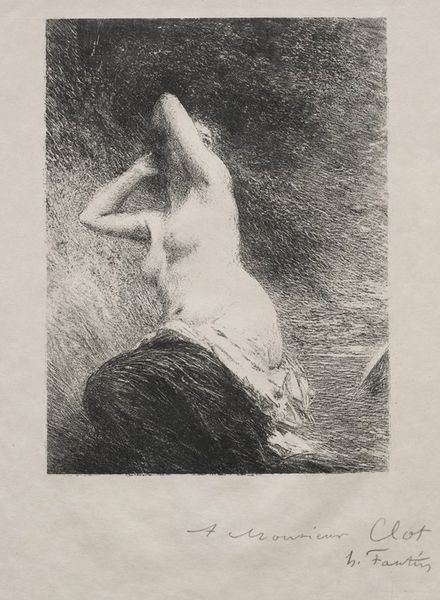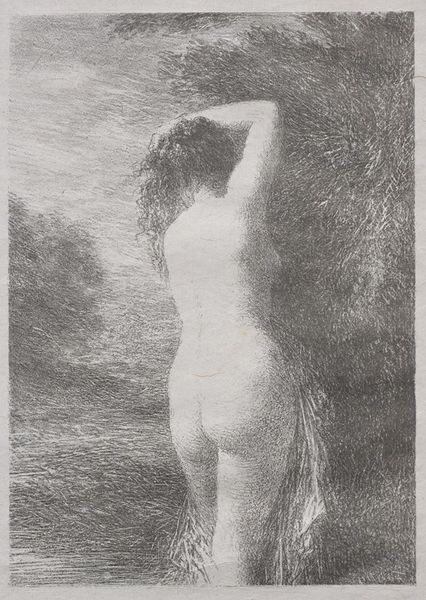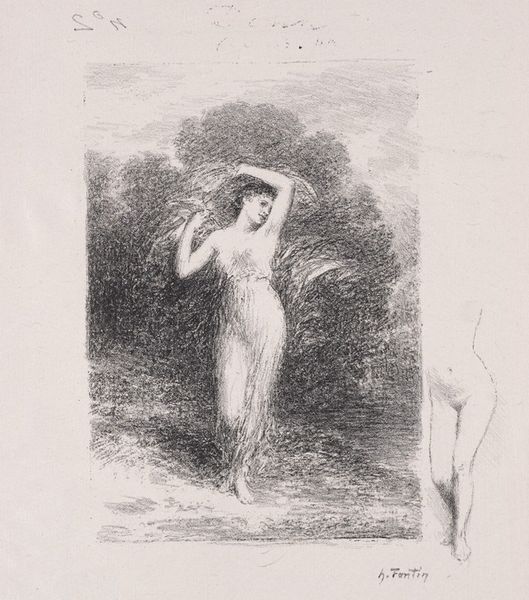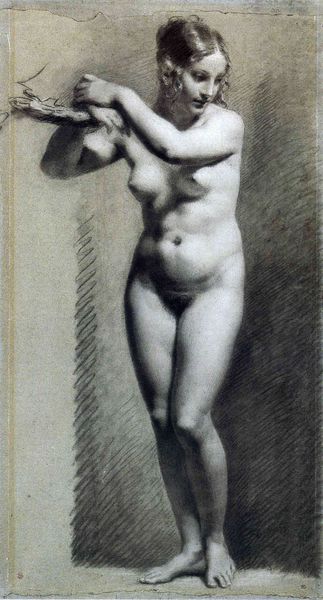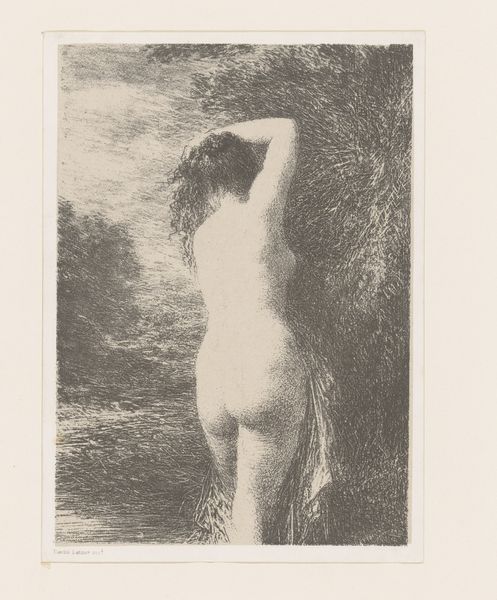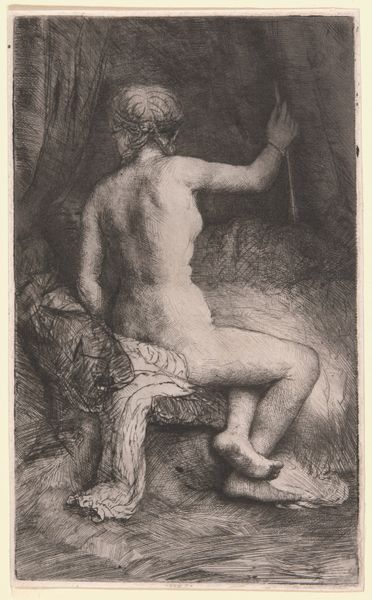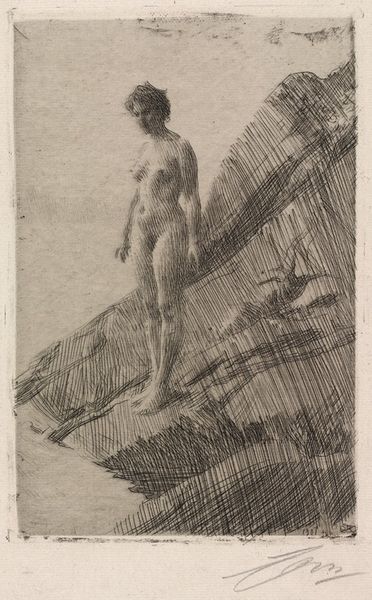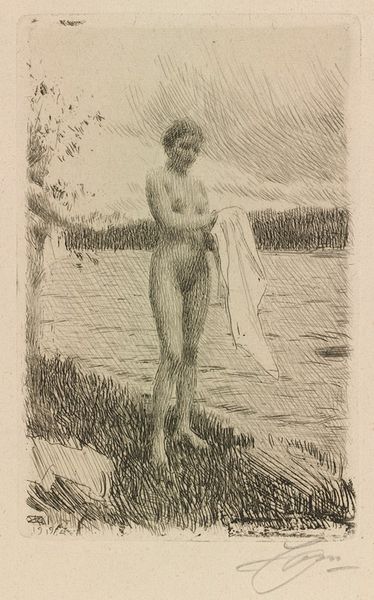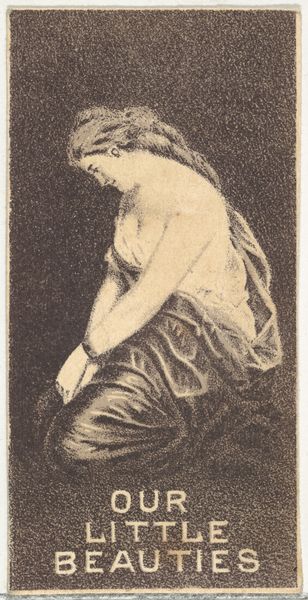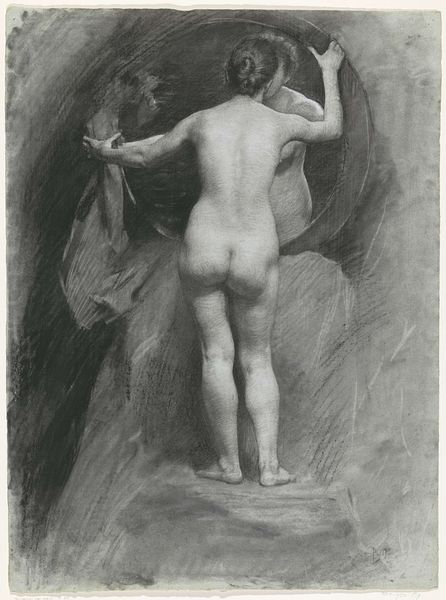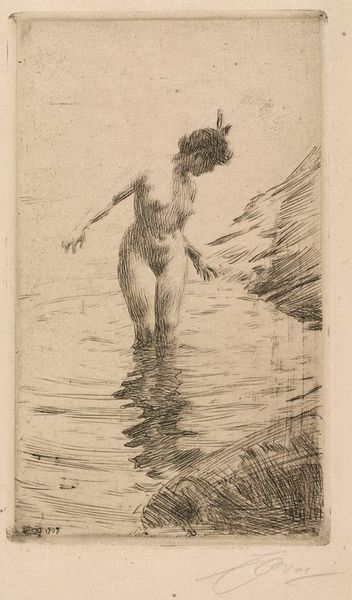
drawing, pencil
#
pencil drawn
#
drawing
#
charcoal drawing
#
figuration
#
pencil drawing
#
pencil
#
symbolism
#
portrait drawing
#
academic-art
#
nude
Copyright: Public Domain: Artvee
Curator: This drawing is Henri Fantin-Latour’s “Andromeda,” created in 1901 using pencil. Editor: It's hauntingly beautiful, isn't it? The figure seems trapped, almost melting into the rock face, which is surrounded by tumultuous water. A profound sense of vulnerability permeates the composition. Curator: Fantin-Latour was really captivated by music and literature, and that interest often flowed into his art. The figure of Andromeda is drawn from Greek mythology, you know, chained to a rock as a sacrifice. It makes me wonder about his artistic influences at this point, as it has both Neoclassical features, yet very much aligns with Symbolism too. Editor: Absolutely! And this Symbolist influence amplifies that emotional intensity we were discussing. He masterfully uses light and shadow, particularly within a pencil medium, to show a figure, bound and helpless. You almost feel the raw textures as though Fantin-Latour aimed to create that empathetic bridge between the viewer and Andromeda's suffering. Curator: You make me realize I see a tension present between the myth and what's present on the sheet: chains, the rock. By depicting a story so entrenched within our cultural consciousness, I'm not so sure he invites us to simply marvel, as many galleries want, but rather challenges us to look at it in light of socio-political contexts. Consider how often women's bodies are subject to constraints—literal or otherwise. This mythological reinterpretation subtly yet effectively opens up a discussion. Editor: That's beautifully said. There's definitely that silent scream within the quietude of the medium and shading. It reminds me to consider the gallery as a space not only for appreciating artistry, but as a mirror reflecting back at us all our present struggles and understandings. It's as though Fantin-Latour beckons us, decades on, to wrestle with discomfort and find empathy in shared experiences. Curator: In a way, viewing Andromeda means coming face-to-face with an era where the chains—both literal and metaphorical—were all too visible, pushing us to examine our contemporary roles and freedoms too. Editor: And isn't that the core reason we pause before such images, seeking some faint glimmer of comprehension within them, as echoes of what might exist both then and within our present?
Comments
No comments
Be the first to comment and join the conversation on the ultimate creative platform.

